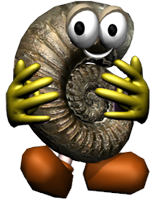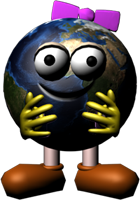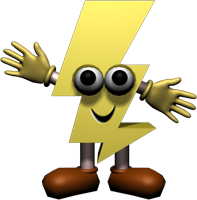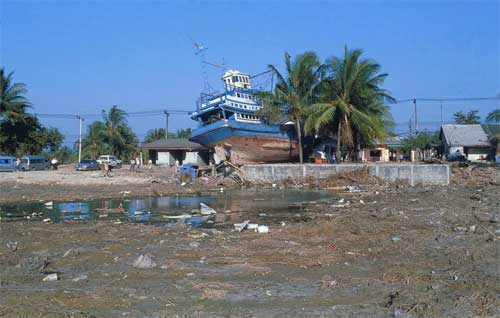Waves
Waves form when the wind blows over a body of water  . In the open ocean waves look like a series of swells. When a wave gets near the shore the wave bottom drags against the seafloor while the top keeps moving. The wave gets narrower and higher and eventually topples over crashing onto the beach face.
. In the open ocean waves look like a series of swells. When a wave gets near the shore the wave bottom drags against the seafloor while the top keeps moving. The wave gets narrower and higher and eventually topples over crashing onto the beach face.
When you watch a wave, it looks like the water is rushing forward. Would it surprise you to learn that it is hardly moving at all? When a wave passes, the water moves around in a circle. The wave crest is at the top of a circle and the wave trough is at the bottom of a circle. The circles get smaller and smaller the deeper you go.
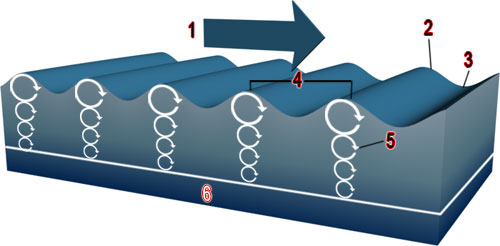
Click to view larger and see the legend.
- Wave movement
- Crest
- Trough
- Wavelength
- Water particle motion
- Negligible water movement below/wavelength
Friction between wind and water cause very small ripples to appear. The wind pushes against the ripples and they grow larger and larger forming waves.
Gigantic waves, called tsunamis, are caused by earthquakes 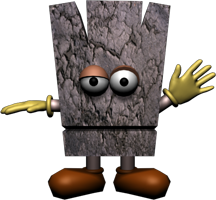 , volcanic
, volcanic 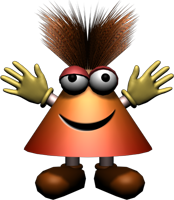 eruptions and landslides that happen on the ocean floor. Tsunamis can reach over 60 m (200 feet) in height. A wave this high can cause flooding kilometres from the shoreline.
eruptions and landslides that happen on the ocean floor. Tsunamis can reach over 60 m (200 feet) in height. A wave this high can cause flooding kilometres from the shoreline.
« Back 




